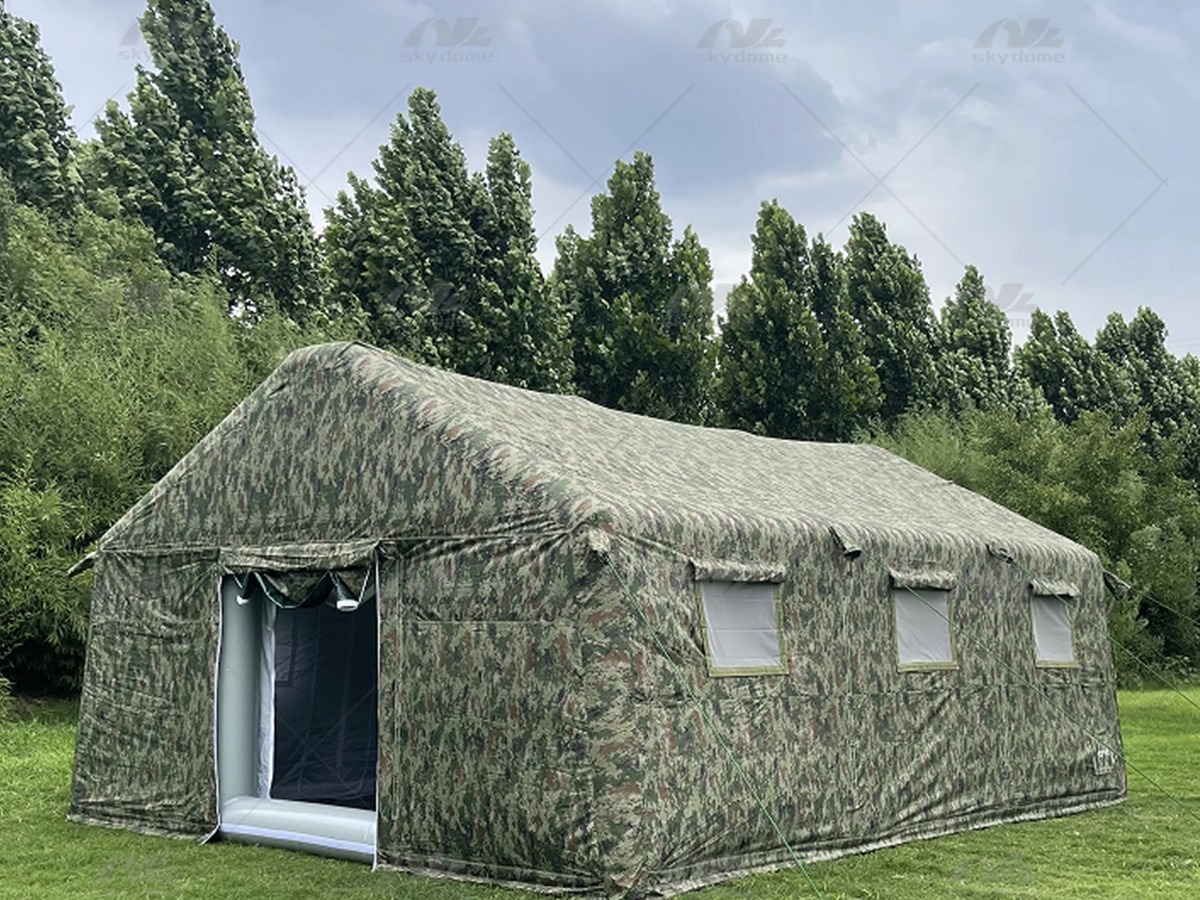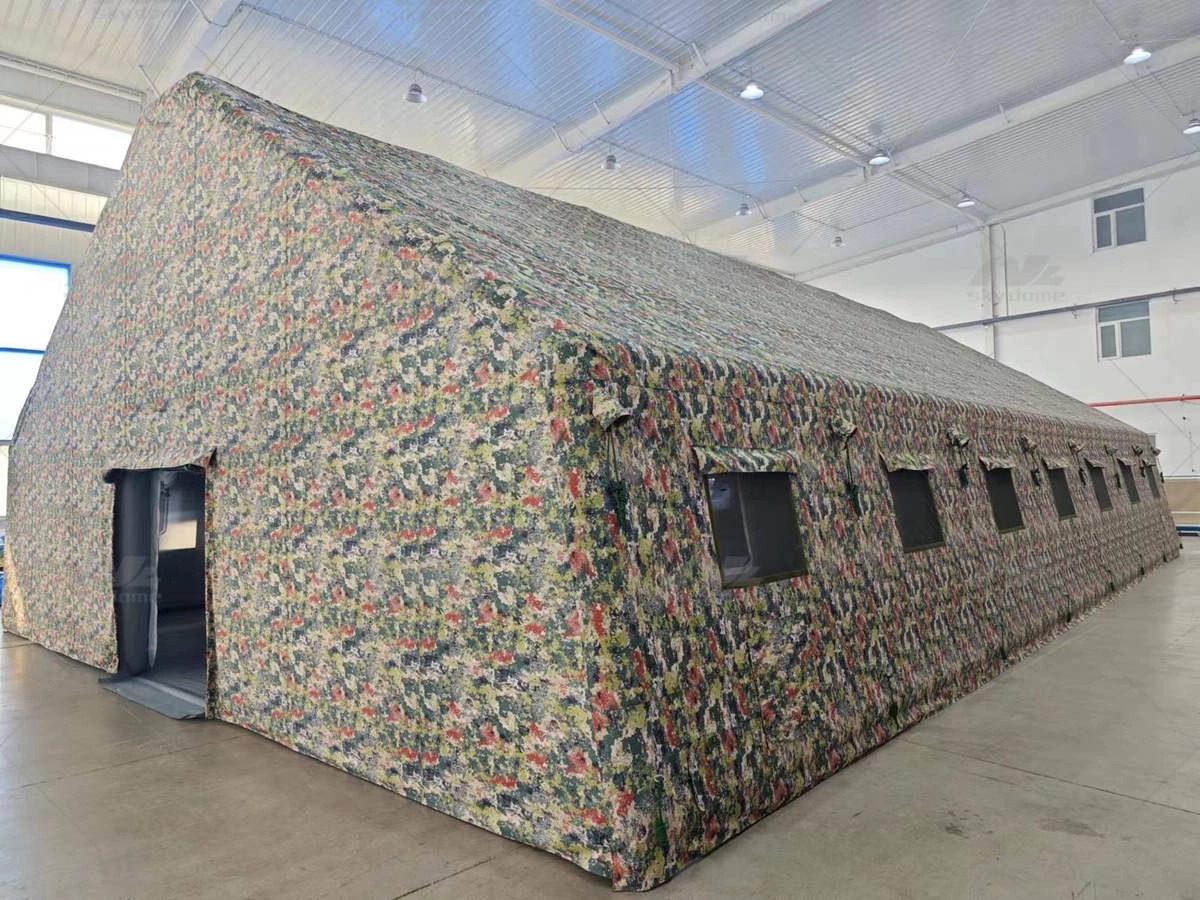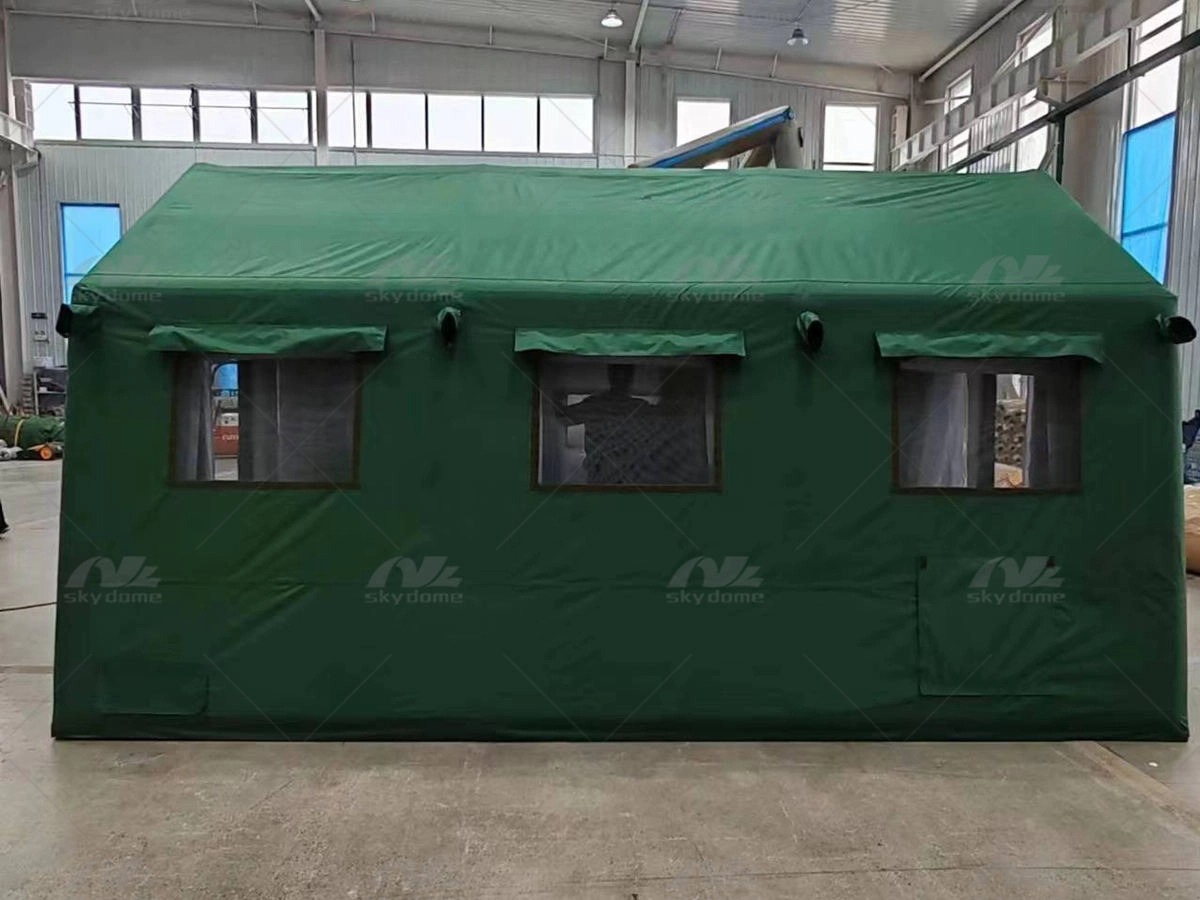
Introduction
In recent years, the concept of the inflatable tent has surged in popularity, especially among outdoor enthusiasts and event organizers. Unlike traditional tents, inflatable tents rely on air beams rather than metal or fiberglass poles. This innovative design has revolutionized how people approach temporary shelter solutions. But the question remains—are inflatable tents a good idea? This article explores their structure, benefits, applications, and drawbacks to help you decide if they are the right fit for your needs.
How Do Inflatable Tents Work?
The Air Beam Principle
At the core of every inflatable tent is the air beam structure, where durable inflatable tubes replace rigid tent poles. These tubes are pumped full of air using a manual or electric air pump, providing a sturdy framework. Once inflated, the tent forms a rigid structure capable of withstanding wind and weather.
A popular variation is the air membrane inflatable tent, which incorporates an additional membrane layer that adds thermal insulation and enhances structural integrity. This makes it ideal for extreme environments like deserts or snow-covered fields.
Advantages of Using an Inflatable Camping Tent
Quick Setup and Takedown
One of the biggest advantages of an inflatable camping tent is its rapid deployment. Traditional tents often require assembling multiple poles and threading them through fabric sleeves—a process that can be frustrating, especially in poor weather. In contrast, an inflatable tent can be set up within minutes. All you need is a pump, and the tent will inflate into shape with minimal effort.
This feature is particularly beneficial during unexpected weather changes. Imagine arriving at a campsite just as the rain begins—being able to inflate your shelter quickly is not just convenient but also practical.
Lightweight and Portable
While the materials used in inflatable tents are robust, they remain surprisingly lightweight. The absence of rigid frames significantly reduces the total weight, making them easier to carry during hikes or long journeys. This makes them an excellent choice for backpackers and campers looking to minimize load without compromising on comfort.
Applications of Inflatable Tents in Real Life
Outdoor Recreational Use
The most common use of an outdoor inflatable tent is for camping, hiking, and trekking. Their ease of use and portability make them perfect for adventurers who value speed and convenience. The built-in air beams also eliminate the risk of broken or bent poles—a common issue with traditional tents.
Moreover, due to their air-filled design, they tend to absorb shocks better, making them more stable on uneven ground. Whether you’re setting up camp in a grassy field or on rocky terrain, inflatable tents adapt well to various environments.
Temporary Outdoor Activities and Events
Inflatable tents aren’t just limited to outdoor recreation. They have found a significant role in temporary outdoor activities such as exhibitions, emergency medical camps, weddings, and disaster relief shelters. Thanks to their large size options and quick setup time, inflatable tents provide a reliable shelter solution in time-sensitive scenarios.
The inflatable tent for temporary outdoor activities is often used by NGOs and event planners who need to deploy temporary shelters at a moment’s notice. Their modular design and scalability make them a practical choice for such operations.

Are There Any Disadvantages?
Vulnerability to Punctures
While modern inflatable tents are made with puncture-resistant materials, no tent is entirely immune to sharp objects. A single puncture can compromise structural integrity, although many tents come with repair kits. Regular inspection of the base and air beams is recommended before each use.
Dependency on a Pump
Since inflatable tents require air to maintain their shape, they are inherently dependent on an air pump. If your pump fails or is lost, setting up the tent becomes impossible. It’s advisable to carry a backup manual pump to avoid such situations.
Comparative Analysis: Inflatable Tent vs Traditional Tent
| Feature | Inflatable Tent | Traditional Tent |
| Setup Time | 5-10 minutes | 15-30 minutes |
| Structural Support | Air beams | Metal or fiberglass poles |
| Portability | Lightweight | Heavier due to poles |
| Durability | Moderate to high | High (depends on material) |
| Wind Resistance | Good (flexible in strong winds) | High (if well anchored) |
| Repairability | Easy with patch kits | Requires replacing parts |
| Ideal Usage | Outdoor recreation, emergency shelter | Long-term camping, mountaineering |
| Cost | Medium to High | Low to High (wide range) |
Frequently Asked Questions (FAQs)
Q1: How long does it take to set up an inflatable tent?
A: Most inflatable tents can be fully set up within 5 to 10 minutes using a pump. Larger models may take slightly longer but remain significantly faster than traditional tents.
Q2: Are inflatable tents safe in windy conditions?
A: Yes, inflatable tents are surprisingly stable in wind due to their flexible structure. However, anchoring them properly is essential to prevent movement.
Q3: What should I do if my inflatable tent gets punctured?
A: Most models come with repair kits that include patches and adhesive. Clean the area thoroughly before applying the patch for best results.
Q4: Can inflatable tents be used in cold weather?
A: Absolutely. Some models, especially air membrane inflatable tents, offer enhanced thermal insulation suitable for winter use. Always check the temperature rating before use.

Conclusion
In conclusion, inflatable tents are more than just a trendy innovation—they are practical, efficient, and suitable for a wide range of applications. Whether you're a weekend camper, an outdoor enthusiast, or an event organizer, there's likely an inflatable tent model that fits your needs.
They combine speed, portability, and comfort in ways that traditional tents often cannot. However, like all products, they come with trade-offs, such as dependency on pumps and susceptibility to punctures. By understanding their features and limitations, you can make an informed decision.
So, are inflatable tents a good idea? For most modern users, the answer is a resounding yes.


















